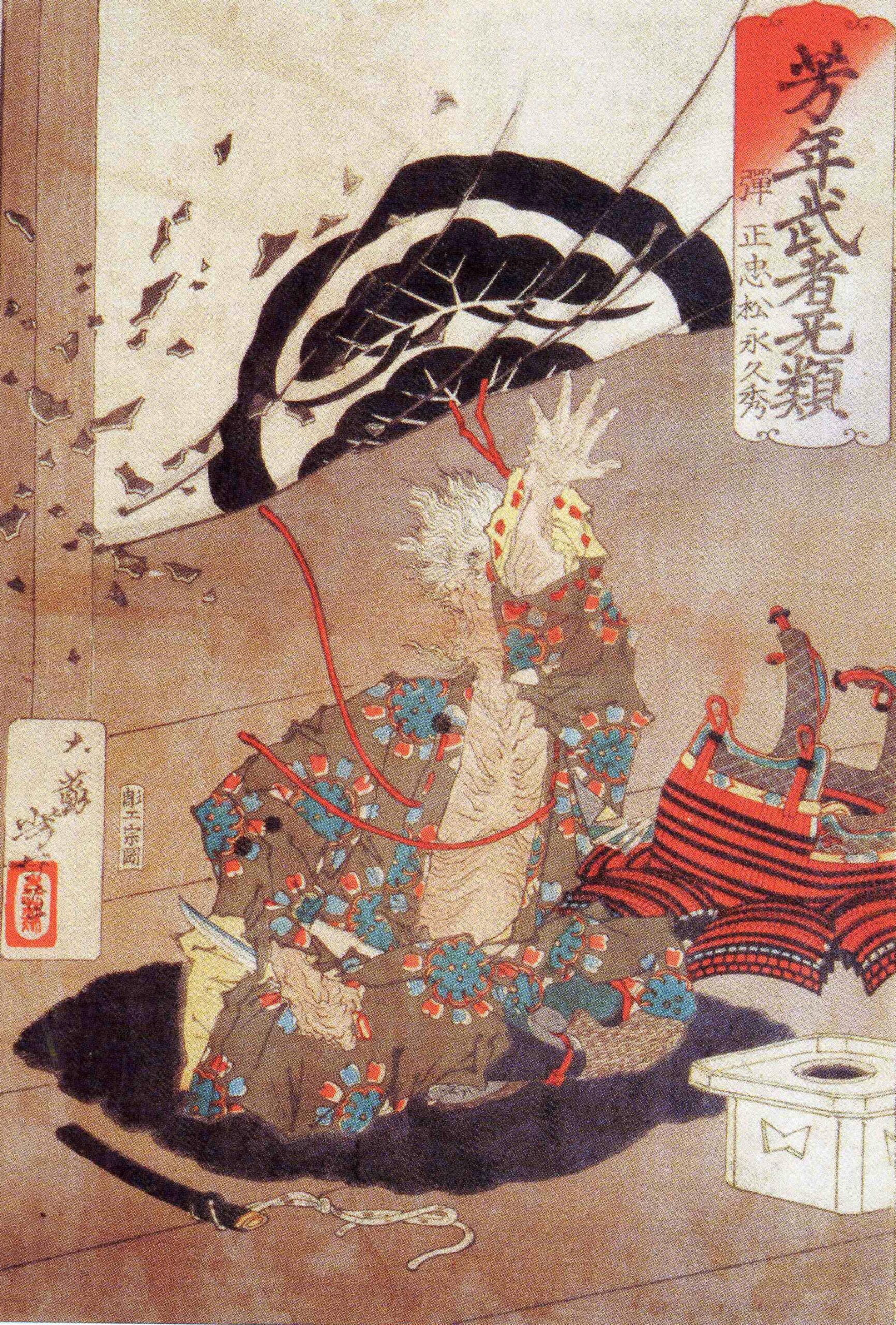1577 Death of a Shogun
History is replete with stories of acts of defiance carried out at the moment of death. Nikola Subió Zrinski defended the fortress of Szigetvár against overwhelming numbers of Turks in 1566. When his last tower was about to fall, Zrinski ordered the powder magazine to be exploded and led his men in a charge to certain death. In 1941 Konstantinos Koukidis, a Greek soldier, wrapped himself in the national flag flying from the Athenian acropolis and hurled himself off the precipice rather than surrender to the invading German army. The self-sacrificial spirit of Japanese samurai in the face of defeat is legendary, but only in that country could a tea cup play such a prominent role.
Matsunaga Hisahide (1508-77) was a prominent daimyo in the midst of a century of political turmoil in Japan. Regional warlords such as Matsunaga vied for influence, invaded each other’s territories, and contested for the shogunate. He was particularly noted for his schemes and treachery. On this date in 1565 he assassinated the incumbent shogun Ashikaga Yoshiteru and replaced him with his own nominee.
Late in his life he ran afoul of Oda Nobunaga, the so-called “Demon King”, the most powerful of the country’s great clan leaders. In 1577 Nobunaga besieged Matsunaga’s Shigisan Castle. Faced with capture, Matsunaga prepared for the usual ritual suicide but before disembowelling himself he destroyed a valuable teacup which Nobunaga coveted. Painters have captured the gesture of defiance.

